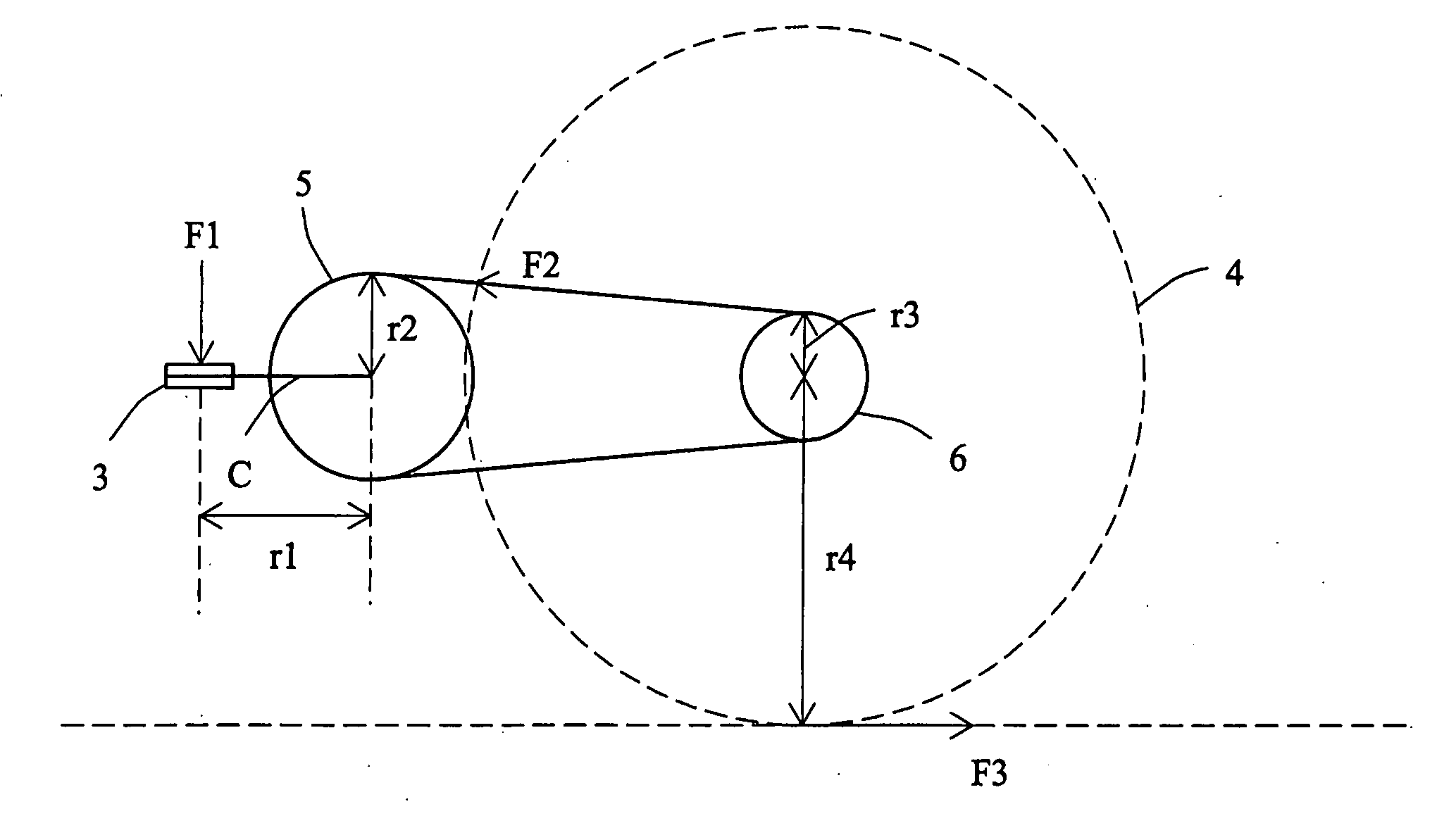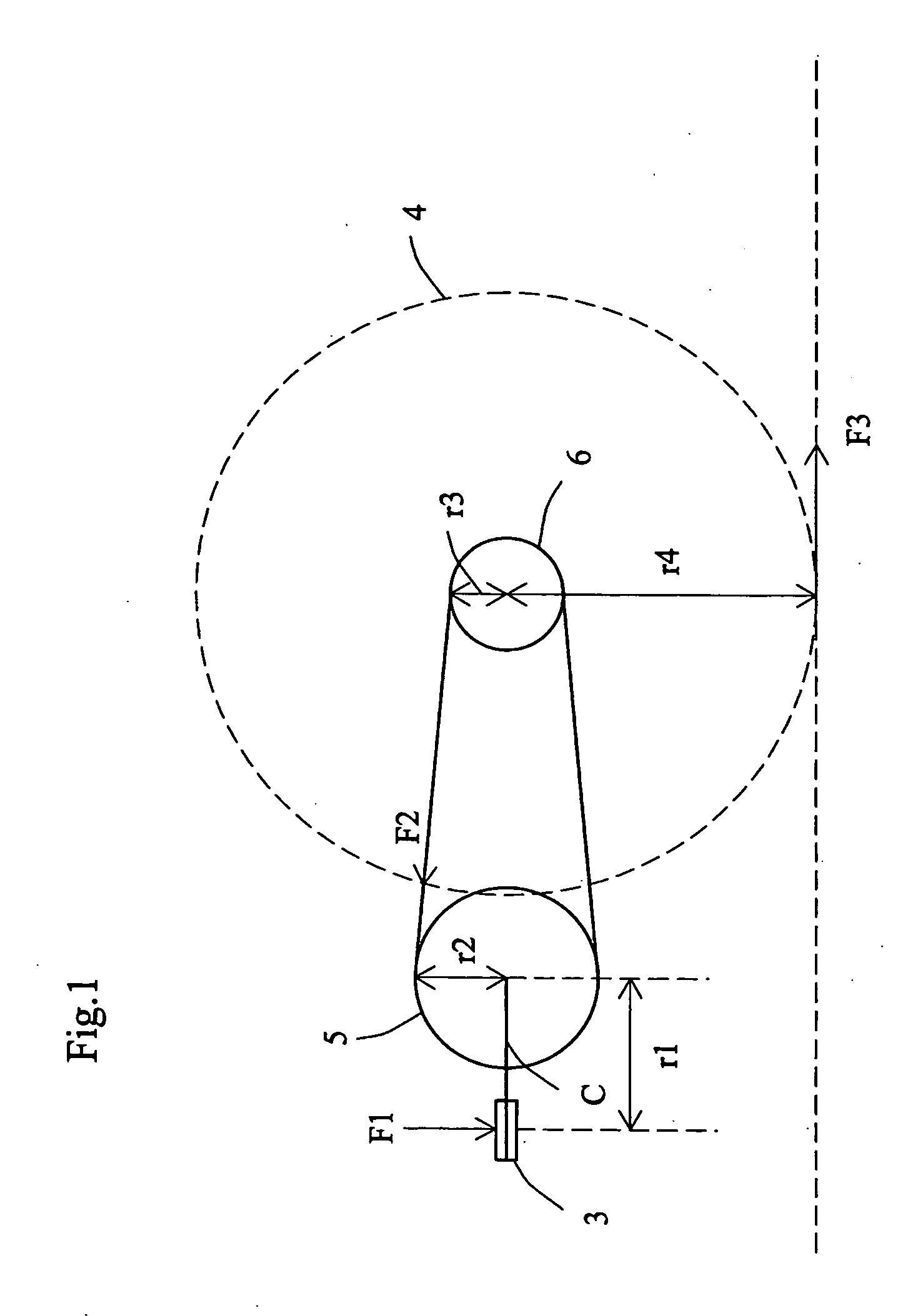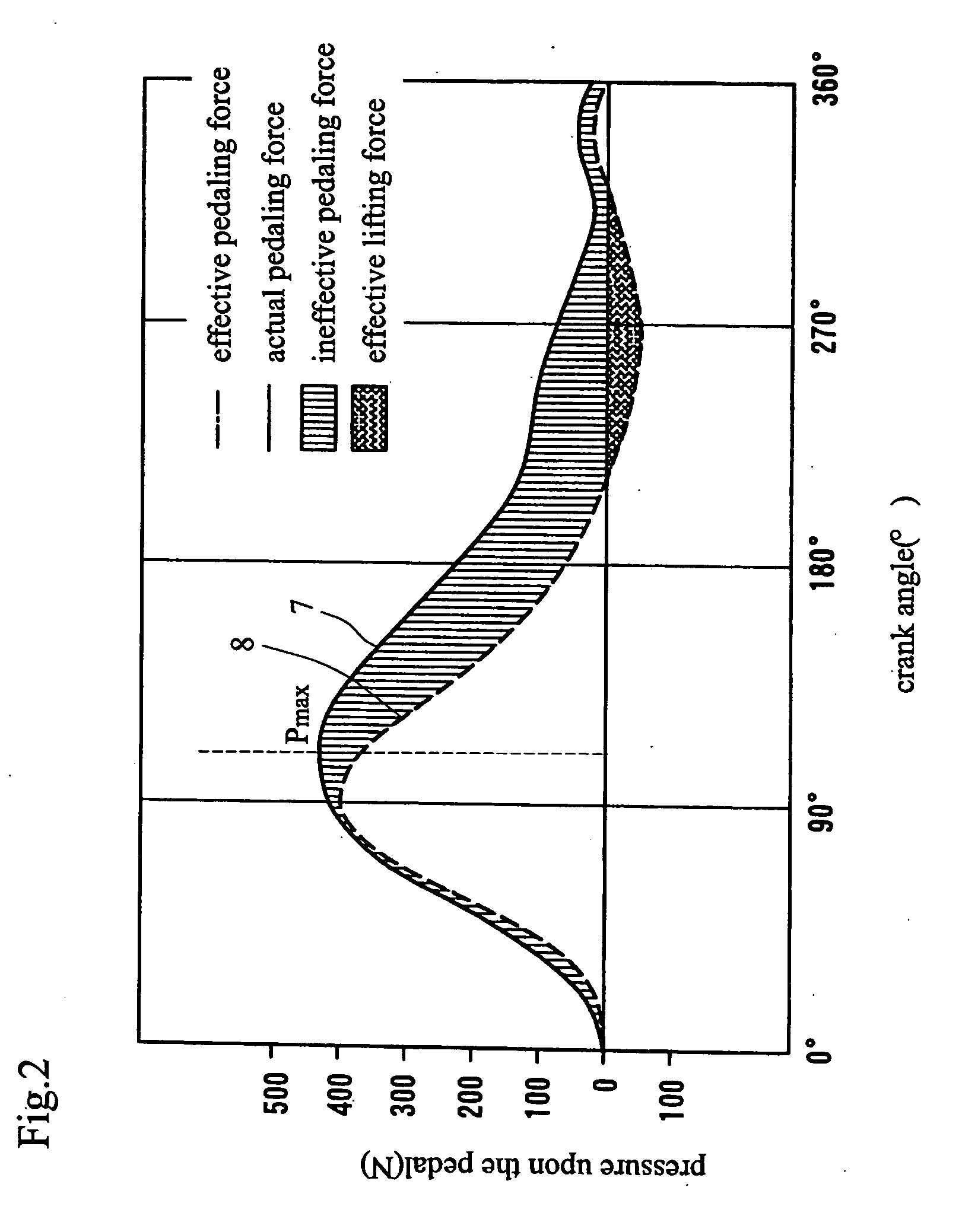Pedaling correction device for bicycle
- Summary
- Abstract
- Description
- Claims
- Application Information
AI Technical Summary
Benefits of technology
Problems solved by technology
Method used
Image
Examples
example 1
[0035] A flow of actual preparation of the modified crank gear dedicated to each cyclist and an embodiment wherein a bicycle equipped with the modified crank gear thus prepared is used for the pedaling training will be described as below. FIG. 3 is a fragmentary view of a crank gear portion of a pedaling training assist device 1 according to one embodiment of the invention. A crank gear G shown in the figure is an example of the modified crank gear (standard type) fabricated based on necessary requirements decided according to a procedure described as below.
[0036] When a long axis of the modified crank gear G is in the vicinity of the top dead center as shown in FIG. 3, a chain engages the crank gear as stretched aslant relative to the horizontal direction. Therefore, a start point of engagement with the chain is slightly shifted backward from the top dead center with respect to the rotational direction of the crank gear.
[0037] When the long axis of the crank gear G and the chain ...
example 2
[0050]FIG. 5 illustrates another example of the pedaling training assist device of the invention. This device includes a cycling machine M equipped with the modified crank gear G fabricated according to the above procedure. The machine also has a crank angle sensor S and a pedal pressure sensor Q mounted thereto. Output signals from these sensors are subjected to computation by a control unit 10 incorporated in the cycling machine M. Thus, a point Pmax (see FIG. 2) where the pressure actually exerted upon the pedal by the cyclist is at maximum is shown on a display 11 in the form of “so-and-so crank angular position”, whereby the cyclist is informed of the cyclist's pedaling conditions. The display 11 is adapted to sequentially show an average value of Pmax (crank angular position) or the like once in several crank strokes or at regular time intervals. The cycling machine M may be, for example, one installed at a fitness gym. This example employs the cycling machine adapted to apply...
example 3
[0052] The example illustrates a telemetry system for determining the pedaling conditions. The system is principally used at a site of a track-like go-around course as a training field, where the cyclist actually rides the bicycle on the course while the system is operated for the purposes of (1) acquiring pedaling data, and (2) determining the pedaling inclinations, the results of the training and the like.
[0053] In the pedaling correction system 1 shown in FIG. 6, the crank angle sensor S is mounted in a body of the bicycle B whereas the pedal pressure sensor Q is mounted to the pedal. The output signals from these sensors are supplied to a control unit 24, where processing is performed for determining the point Pmax where the pressure actually exerted upon the pedal by the cyclist is at maximum. Subsequently, data indicative of the average value of the Pmax (crank angular position) calculated from average data determined once in several crank strokes, for example, are transmitte...
PUM
 Login to View More
Login to View More Abstract
Description
Claims
Application Information
 Login to View More
Login to View More - R&D
- Intellectual Property
- Life Sciences
- Materials
- Tech Scout
- Unparalleled Data Quality
- Higher Quality Content
- 60% Fewer Hallucinations
Browse by: Latest US Patents, China's latest patents, Technical Efficacy Thesaurus, Application Domain, Technology Topic, Popular Technical Reports.
© 2025 PatSnap. All rights reserved.Legal|Privacy policy|Modern Slavery Act Transparency Statement|Sitemap|About US| Contact US: help@patsnap.com



